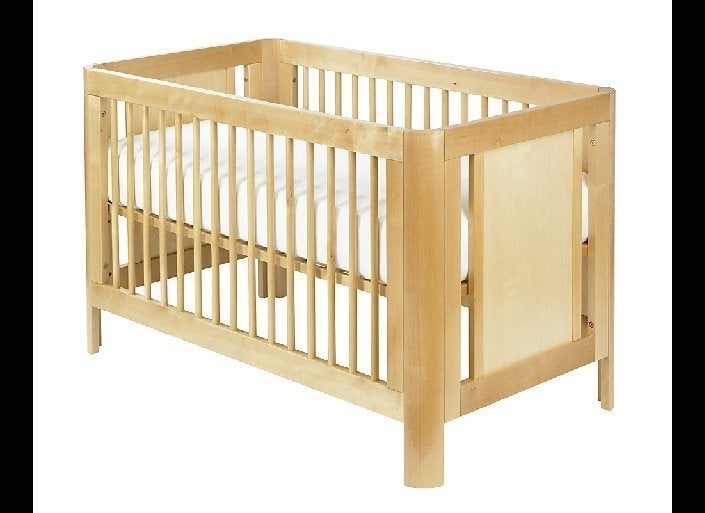Send all your eco-inquiries to Jennifer Grayson at eco.etiquette@gmail.com. Questions may be edited for length and clarity.
I was about to buy my soon-to-be-born baby a crib at Ikea the other day when I ran across an article about formaldehyde in furniture. Barely keeping up with pesticides, parabens, sulfates, and the like. Do I need to freak out about this too? Please advise.
-Maya
Those who read this column regularly know it's not my style to preach; above all, I strive to find common green ground, (hopefully) diplomatically crafting both sides of an eco argument and letting you -- smart, sustainability-minded readers that you are -- make your own informed decisions.
Well, I'm not going to do that this time. You ask whether formaldehyde in baby furniture is freak-out worthy. My answer is: Yes. Yes, it is.
But before you run screaming down the aisles of Ikea, flinging flimsy furniture and Swedish meatballs at every turn, let me first say that there is some good news about formaldehyde, at least from the consumer's perspective:
Unlike the chemical BPA, an insidious assailant that pops up everywhere from dental fillings to dollar bills, we know one sizable source of formaldehyde: wood furniture.
Specifically, pressed wood furniture, which includes particleboard (hello, Ikea!), some plywood, and medium density fiberboard. (Ikea, to its credit, has worked to reduce formaldehyde in its products.) All of these wood products are made from itty bitty pieces of wood that are bonded with a resin that contains formaldehyde.
We also know that formaldehyde, is indeed, highly toxic. The World Health Organization calls it a known carcinogen; EPA concurs, linking its inhalation to a host of cancers, including nasopharyngeal cancers, leukemia, and lymphoma.
Thankfully last year, President Obama signed the frumpy-sounding (but landmark) Formaldehyde Standards for Composite Wood Products Act into law, which will help protect consumers from formaldehyde exposure.
But until that law goes into effect (and even after, since it only reduces, not eliminates, formaldehyde in furniture), it's especially important to safeguard our littlest citizens. Their still-developing systems are most vulnerable to toxic chemical exposure.
Sadly, childhood cancers are on the rise; the more than 80,000 unregulated industrial chemicals now on the market in the US likely have something to do with it.
So, back to the crib. Babies sleep, on average, 15 hours a day. Which means whatever those plumpy little cheeks are pressed up against during their delicate slumber is what they'll be breathing in -- formaldehyde included.
That's why additionally, you should look for a crib or bassinet painted without VOCs (which also contain formaldehyde) and a mattress made from natural materials. Conventional crib mattresses contain a host of toxic chemicals, including formaldehyde, flame retardants, and phthalates (linked to early onset puberty).
In this economy, a green crib may seem like an out-of-reach expenditure, but it doesn't have to be. Forget the organic toys, forget the soy fabric onesies, forget the FSC-certified mobile: If you're going to make one green purchase for your baby, let it be a nontoxic place for him to sleep.
Still don't have room in your budget? Go the extra eco mile and swap disposable diapers for cloth ones; in the process you'll save over $1,000 per child -- enough for at least one of these four fabulous, formaldehyde-free finds:
